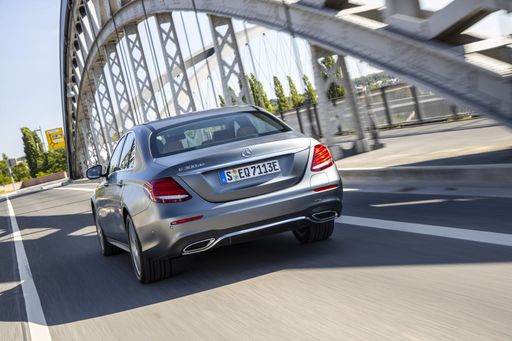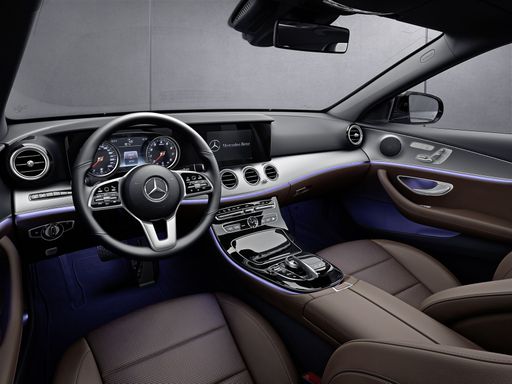Mercedes E Class vs BYD Seal 6 – Which model is better for everyday use?
Both models have their strengths – but which one suits you more?
Compare performance, efficiency, price and space directly: Mercedes E Class or BYD Seal 6?
Costs and Efficiency:
Price and efficiency are often the first things buyers look at. Here it becomes clear which model has the long-term edge – whether at the pump, the plug, or in purchase price.
BYD Seal 6 has a distinct advantage in terms of price – it starts at 36800 £, while the Mercedes E Class costs 50500 £. That’s a price difference of around 13642 £.
Fuel consumption also shows a difference: Mercedes E Class manages with 1.50 L and is therefore somewhat more efficient than the BYD Seal 6 with 1.70 L. The difference is about 0.20 L per 100 km.
As for range, the Mercedes E Class performs somewhat better – achieving up to 116 km, about 16 km more than the BYD Seal 6.
Engine and Performance:
Under the bonnet, it becomes clear which model is tuned for sportiness and which one takes the lead when you hit the accelerator.
When it comes to engine power, the Mercedes E Class has a convincingly edge – offering 585 HP compared to 212 HP. That’s roughly 373 HP more horsepower.
In acceleration from 0 to 100 km/h, the Mercedes E Class is convincingly quicker – completing the sprint in 4 s, while the BYD Seal 6 takes 8.50 s. That’s about 4.50 s faster.
In terms of top speed, the Mercedes E Class performs noticeable better – reaching 250 km/h, while the BYD Seal 6 tops out at 180 km/h. The difference is around 70 km/h.
Space and Everyday Use:
Whether family car or daily driver – which one offers more room, flexibility and comfort?
Both vehicles offer seating for 5 people.
In curb weight, BYD Seal 6 is hardly perceptible lighter – 1710 kg compared to 1810 kg. The difference is around 100 kg.
In terms of boot space, the Mercedes E Class offers barely noticeable more room – 540 L compared to 500 L. That’s a difference of about 40 L.
When it comes to payload, Mercedes E Class distinct takes the win – 640 kg compared to 435 kg. That’s a difference of about 205 kg.
Who comes out on top?
Overall, the Mercedes E Class shows itself to be outperforms in nearly all aspects and secures the title of DriveDuel Champion.
It convinces with the more balanced overall package and proves to be the more versatile choice for everyday use.

Mercedes E Class
Mercedes E Class
The Mercedes-Benz E-Class Saloon epitomises sophistication and innovation, offering a seamless blend of elegant design and cutting-edge technology. Its refined interior ensures exceptional comfort, making every journey a luxurious experience. The driving dynamics are impressively balanced, providing both agility and smoothness, perfect for both city driving and long-distance cruising.
details @ group-media.mercedes-benz.com
@ group-media.mercedes-benz.com
 @ group-media.mercedes-benz.com
@ group-media.mercedes-benz.com
 @ group-media.mercedes-benz.com
@ group-media.mercedes-benz.com
BYD Seal 6
The BYD Seal 6 is a captivating electric sedan that captures attention with its sleek design and modern aerodynamics. With a strong focus on sustainability, it offers an impressive electric driving experience, combining efficiency with cutting-edge technology. The Seal 6 stands out in the EV market for its luxurious interior and innovative features, making it a strong contender for drivers looking to embrace the future of transportation.
details

|
|
|
|
|
Costs and Consumption |
|
|---|---|
|
Price
50500 - 119700 £
|
Price
36800 - 42800 £
|
|
Consumption L/100km
1.5 - 7.5 L
|
Consumption L/100km
1.7 - 2.6 L
|
|
Consumption kWh/100km
-
|
Consumption kWh/100km
-
|
|
Electric Range
101 - 116 km
|
Electric Range
50 - 100 km
|
|
Battery Capacity
21.20 kWh
|
Battery Capacity
-
|
|
co2
39 - 172 g/km
|
co2
38 - 60 g/km
|
|
Fuel tank capacity
50 - 66 L
|
Fuel tank capacity
65 L
|
Dimensions and Body |
|
|---|---|
|
Body Type
Sedan
|
Body Type
Estate
|
|
Seats
5
|
Seats
5
|
|
Doors
4
|
Doors
5
|
|
Curb weight
1810 - 2390 kg
|
Curb weight
1710 - 1805 kg
|
|
Trunk capacity
370 - 540 L
|
Trunk capacity
500 L
|
|
Length
4949 - 4959 mm
|
Length
4840 mm
|
|
Width
1880 mm
|
Width
1875 mm
|
|
Height
1468 - 1480 mm
|
Height
1505 mm
|
|
Max trunk capacity
-
|
Max trunk capacity
1535 L
|
|
Payload
530 - 640 kg
|
Payload
435 kg
|
Engine and Performance |
|
|---|---|
|
Engine Type
Petrol MHEV, Plugin Hybrid, Diesel MHEV
|
Engine Type
Plugin Hybrid
|
|
Transmission
Automatic
|
Transmission
Automatic
|
|
Transmission Detail
Automatic Gearbox
|
Transmission Detail
CVT
|
|
Drive Type
Rear-Wheel Drive, All-Wheel Drive
|
Drive Type
Front-Wheel Drive
|
|
Power HP
186 - 585 HP
|
Power HP
184 - 212 HP
|
|
Acceleration 0-100km/h
4 - 8.5 s
|
Acceleration 0-100km/h
8.5 - 8.9 s
|
|
Max Speed
222 - 250 km/h
|
Max Speed
180 km/h
|
|
Torque
320 - 750 Nm
|
Torque
-
|
|
Number of Cylinders
4 - 6
|
Number of Cylinders
4
|
|
Power kW
137 - 430 kW
|
Power kW
135 - 156 kW
|
|
Engine capacity
1993 - 2999 cm3
|
Engine capacity
1498 cm3
|
General |
|
|---|---|
|
Model Year
2024 - 2025
|
Model Year
2025
|
|
CO2 Efficiency Class
E, F, B, D
|
CO2 Efficiency Class
B
|
|
Brand
Mercedes-Benz
|
Brand
BYD
|
Is the Mercedes E Class offered with different drivetrains?
The Mercedes E Class is offered with Rear-Wheel Drive or All-Wheel Drive.
The prices and data displayed are estimates based on German list prices and may vary by country. This information is not legally binding.
